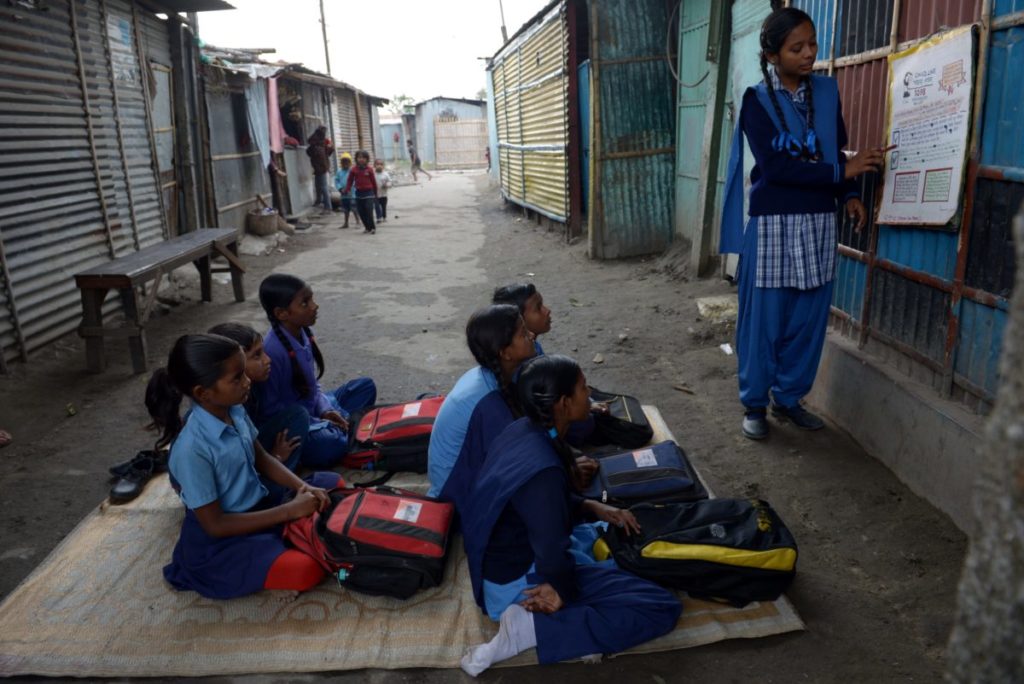This is part one of a four-part series taking a deeper dive into child protection efforts in India. A group of concerned volunteers known as the child protection unit works together to protect children from child labor, child marriage, and child trafficking through education.
By Annila Harris
Against the backdrop of Siliguri, West Bengal’s manic train track crossing, a few meters away a meeting appears to be underway.
Huddled on an open terrace, the group discusses the proceedings of the day.
“So what is the plan of action for today?” enquires 14-year-old Hina in a shout, intending to drown the toot of the train passing by.
Flipping through the pages of the case register, she waits for each member present to give their vital input.
“We have to follow-up with the family of the girl who went missing and check-up on the child marriage case, Reshma*, just to see her current situation,” says Sandeep, secretary of the child protection unit and a World Vision volunteer.
Page by page, inked in chronicles, the case register stands testament to the varied cases undertaken by the child protection unit.
“And we need to account for all the children we have enrolled in school. We should also inform more of our community children about child rights. Hina, I think you should do it,” says Santosh another member and World Vision’s remedial class teacher.
The members, perceiving the need for a follow-up, make a unanimous decision approving Sandeep’s and Santosh’s suggestions. Before dispersing, the members check to see if any new cases need immediate attention. Fixing the date for their next group meeting, the members venture out in different directions to fulfill the tasks laid out for them by the group.
Intending to pursue the matters discussed at the meeting, Sandeep and Santosh embark upon their fact-finding mission, navigating through tapered trails to visit the families.
Presenting itself as an emerging commercial transit city, Siliguri serves as a corridor between the open borders of Nepal, Bhutan, Bangladesh, North-East India, Sikkim, and mainland India. This booming business hub, developing at an exponential rate and creating employment opportunities in West Bengal, attracts migrating communities and brings in cheap labor. Economic expansion amplifies the vulnerability of migrant children, exposing them to child labor, trafficking, and various other social vices.
“To reduce the vulnerability of children and protect their rights we have utilized a community-based approach where we establish local vigilance committees and child protection units (CPUs),” says Nicole, a project manager for World Vision India. “These CPUs consist of community-based organization members, youth members, women from self-help groups, and active members of our children’s club. Including children is important because their opinions are vital to address child protection issues.
“To build their capacity World Vision trained them on the reporting system, government delivery system, issue resolution methods, and links with law enforcement. [They also work with] other NGOs, and the District Child Protection Officer’s office. Now CPUs can trace and bring back trafficked children and enroll child laborers in school. The CPUs play a vital role in protecting the rights of children in the communities.”
Photo: 14-year-old Hina training other children in her community on how children can protect themselves from possible danger and harm. She is a member of the child protection unit started by World Vision in her community. © 2016 World Vision/ photo by Annila Harris


